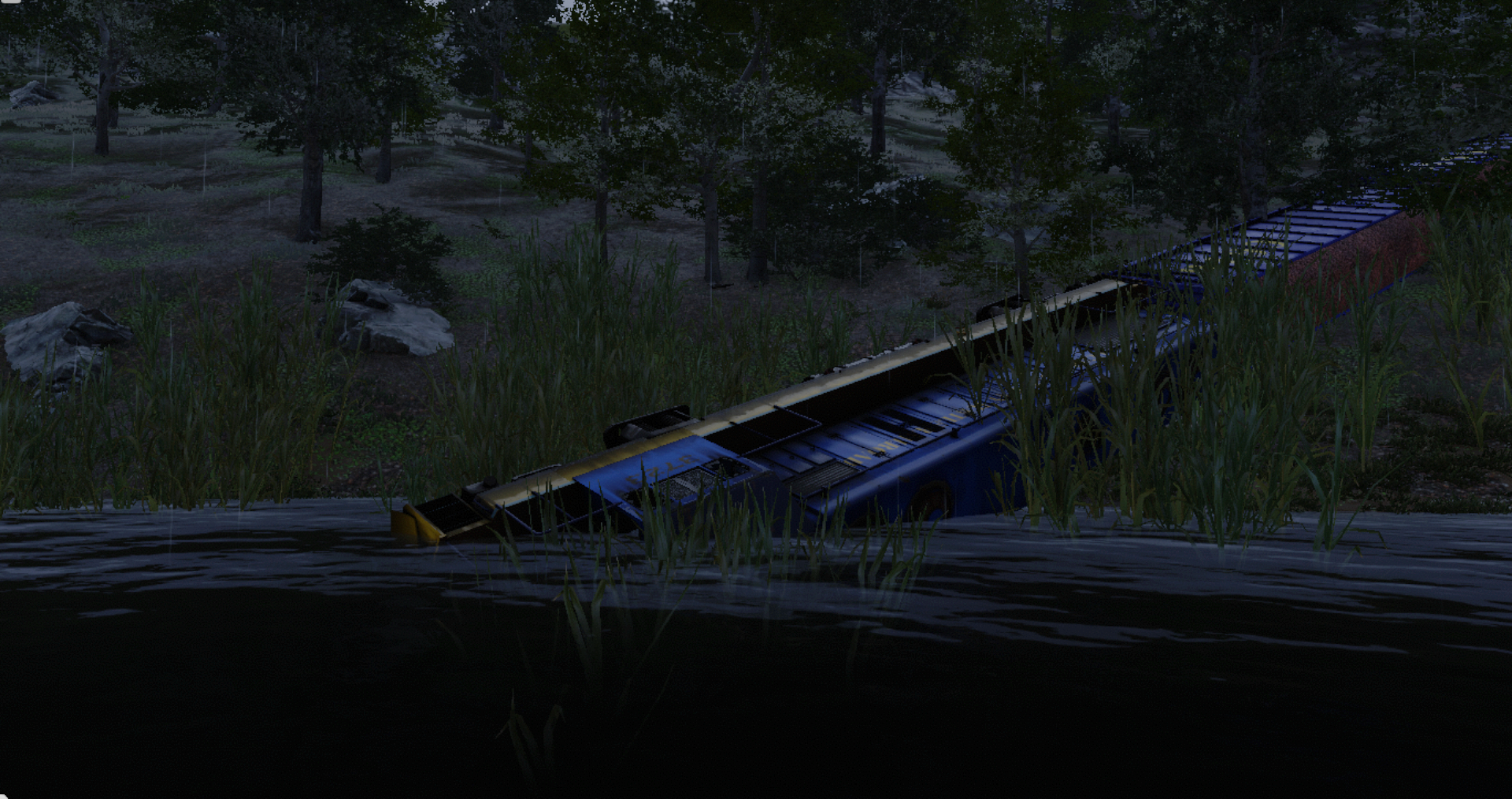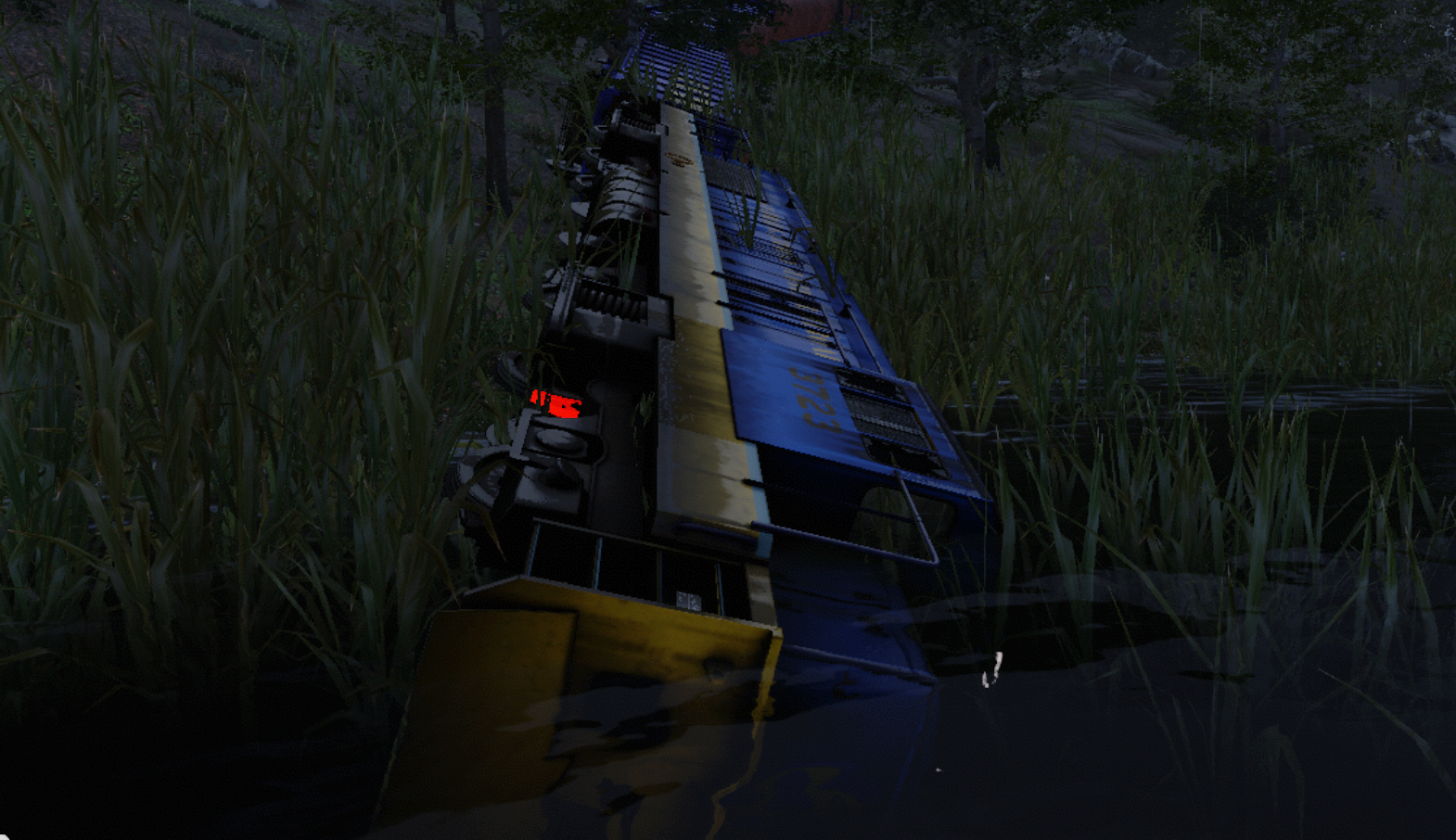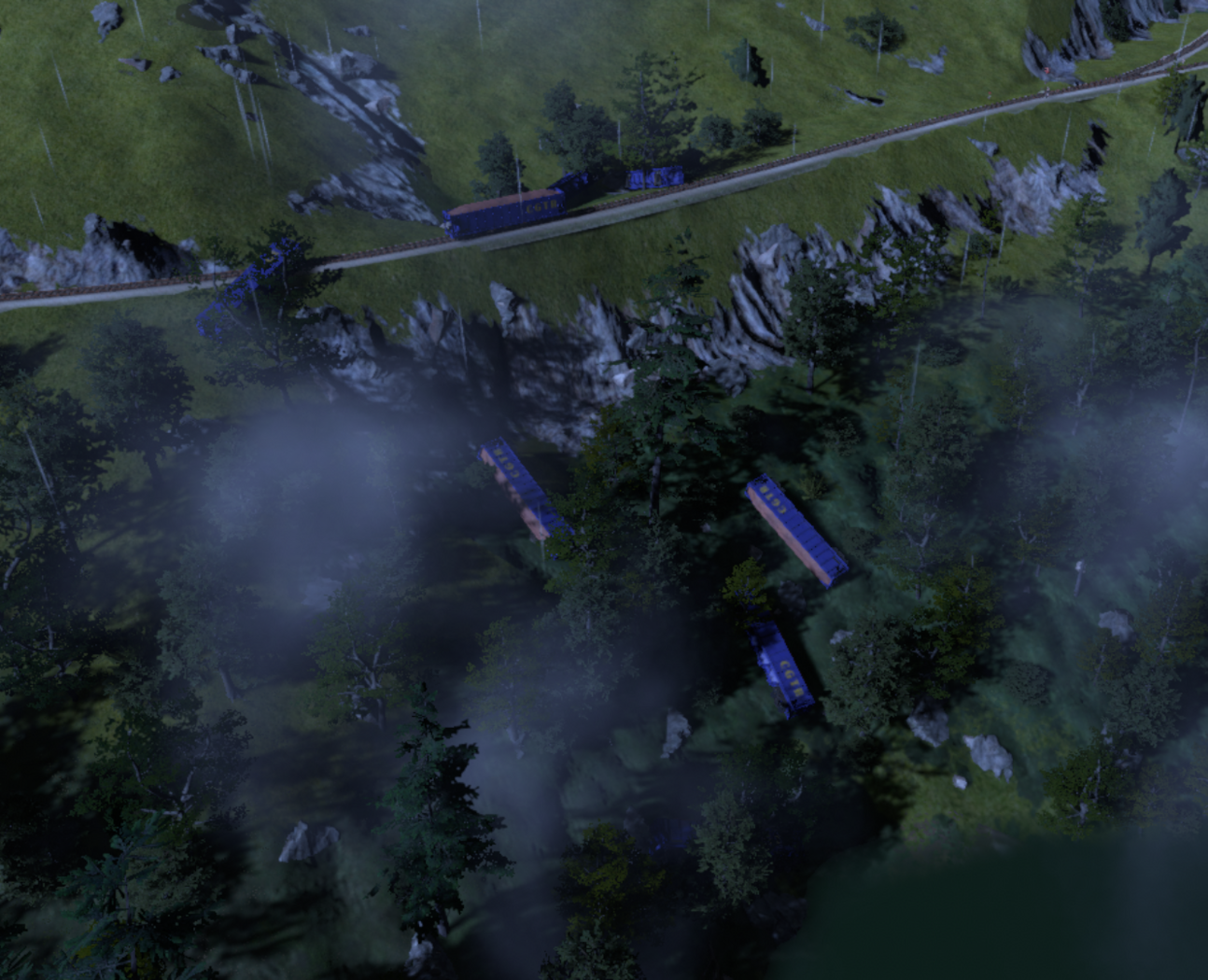Central Gateway Turtle Railroad: Difference between revisions
No edit summary |
No edit summary |
||
| Line 32: | Line 32: | ||
==Incidents== | ==Incidents== | ||
===Gulfport Runaway Incident=== | ===Gulfport Runaway Incident=== | ||
<gallery | <gallery mode=packed heights=700px style="text-align:left"> | ||
File:CGTR_3723_Derailment.png|CGTR #3723 after derailing near Gulfport, MS | File:CGTR_3723_Derailment.png|CGTR #3723 after derailing near Gulfport, MS | ||
File:CGTR 3723 Brake Failure.png|CGTR #3723's brakes glowing red after the locomotive derailed near Gulfport, MS | File:CGTR 3723 Brake Failure.png|CGTR #3723's brakes glowing red after the locomotive derailed near Gulfport, MS | ||
Revision as of 19:27, 25 December 2023
 | |
 CGTR #3723, a Hydrogold livery GE U25C in 1973 (enhanced). | |
| Reporting mark | CGTR, GTLW, CGTZ, GTLX, TRTM |
|---|---|
| Dates of operation | 1874–Present |
| Predecessor | GAEA, TRLN |
| Track gauge | 4 ft 8 1⁄2 in (1,435 mm) standard gauge |
| Electrification | Third Rail |
| Headquarters | Fort Worth, TX |
| Website | cgtr |
The Central Gateway Turtle Railroad (Reporting mark CGTR, GTLW, CGTZ, GTLX, TRTM) is a Class I railroad located primarily in the Southern, Eastern, and Central regions of the United States, and headquarted in Fort Worth, Texas. The Central Gateway Turtle Railroad was founded in 1874 by the merger of Gateway Eastern and Turtle Northern, and has been operating since. In 1951, CGTR completely switched to diesel locomotives, ditching steam locomotives in favor of increasing profits. In recent years, CGTR has focused on cargo and shifted most passenger operations to TurtleTram, an experimental passenger/freight railway created by CGTR in 1989.
History
After the merger of Gateway Eastern and Turtle Northern in 1874, CGTR quickly placed the locomotives from both railways into service. These locomotives would be used until they were either replaced or retired. In 1940, CGTR would purchase their first diesel electric switching locomotive, an ALCO HH1000. CGTR would continue buying diesel-electric switchers after the HH1000, including EMD NW2s, Baldwin VO-660s, and many others. In 1948, CGTR would purchase 20 E7s and 6 Baldwin DR-12-8-1500/2s, marking the first non-switching diesel-electric locomotives purchased by CGTR. These would be unscheduled or leased out until mid-1951, when CGTR would ditch steam locomotives in favor of switching to diesel to increase profits. Some of the earliest diesel locomotives placed into operation on the CGTR would be the E7s, the DR-12-8-1500/2s, an FM Erie-Built and 2 B-Units purchased in 1949, and 9 EMD BL2s. These would be shortly followed by an expiremental diesel-hydraulic switcher built by EMD (the DH1), 3 ILW 17-As, and 57 EMD GP7s.
Incidents
Gulfport Runaway Incident
On the 21st of February, 1982, CGTR #3723 was hauling a 28 car iron ore train through the stormy weather near Gulfport, Mississippi. At around 4:38 AM, the locomotive was approaching a somewhat steep grade. The engineer increased the throttle, to keep the train going fast enough, and also applied the sander to account for the wet and slippery trackage. As the locomotive accelerated up the hill, the thunderstorm began to worsen. At about 4:45 AM, the thunderstorm would reach its most severe point, and the locomotive was struggling to continue to accelerate. The engineer would set the throttle to full, to attempt to overcome this. At approximately 4:56 AM, lightning would hit the locomotive, causing the cab to completely lose power. The locomotive by this time had reached the top of the hill, and was getting ready to go downhill. With the throttle being uncontrollable and already at max, the engineer attempted to stop the train by pulling the brakes. This slowed down the train momentarily, but because of the steep grade and high throttle, the train's brakes would eventually overheat and fail. The locomotive would barrel downhill, eventually going onto a relatively sharp curve in the tracks, causing the train to derail and fall into a lake. All members of the crew in the cab would be killed, however the crew members in the caboose would only experience some slight injuries.
Equipment
Locomotives
As of late 2023, CGTR rosters 3,510 locomotives.
| Type | Quantity | Road Numbers | Notes | Image |
|---|---|---|---|---|
| EMD F125 | 74 | 1-3, 14-25, 42-50, 300-349 | ||
| GE P32AC-DM | 35 | 4-13, 6900-6924 | ||
| EMD GP40FH-2 | 26 | 26-41, 6300-6309 | ||
| EMD F59PHI | 8 | 51-58 | ||
| GE ET44AC | 150 | 100-149, 9900-9999 | ||
| EMD SD70ACe-T4 | 50 | 200-249 | ||
| Wabtec FLXDrive | 90 | 400-459, 500-529 | ||
| GTLW GP20-GT | 6 | 600-605 | Ex. GRR GP20 | |
| GTLW SD40-GTHH | 55 | 5000-5054 | Rebuilt from SD40-2s | |
| GTLW SD40-GTS | 39 | 5064-5102 | Rebuilt from SD40-2s | |
| GTLW SD40-GT | 64 | 5116-5179 | Rebuilt from SD40-2s | |
| EMD SW1504 | 24 | 5400-5423 | ||
| EMD MP15AC | 50 | 5500-5549 | ||
| GE B23-7 | 36 | 5700-5735 | ||
| EMD GP39-2 | 17 | 5800-5816 | ||
| GE C30-7 | 22 | 5900-5921 | ||
| GE B30-7 | 78 | 6000-6077 | ||
| GE B39-8 | 20 | 6100-6119 | ||
| EMD MP15T | 20 | 6200-6219 | ||
| GE C40-8 | 40 | 6400-6439 | ||
| EMD F59PH | 33 | 6500-6532 | ||
| EMD SD60M | 50 | 6600-6649 | ||
| GE C40-8W | 70 | 6700-6769 | ||
| GE C44-9W | 50 | 6800-6849 | ||
| GE AC4400CW | 645 | 7000-7644 | ||
| GE P42DC | 30 | 7700-7729 | ||
| GE AC6000CW | 50 | 7800-7849 | ||
| EMD SD70MAC | 30 | 7900-7929 | ||
| EMD GP20D | 35 | 8000-8034 | ||
| EMD SD9043MAC | 48 | 8100-8147 | ||
| EMD SD70ACe | 308 | 8200-8457 | ||
| GE ES44DC | 300 | 8500-8799 | ||
| GE ES44AC | 455 | 8800-9254 | ||
| GE ES44C4 | 553 | 9300-9852 |
Liveries
Classic Freight
Classic Passenger
Bluewashed
The Bluewashed scheme was a CGTR scheme used on freight and switching locomotives that was first seen in the mid 1960s and 1970s, appearing on the new GE U25Bs, EMD SW1500s, ALCO C630s, EMD SD39s, GE U33Bs, GE B36-7s, EMD F45s, EMD SD40-2 and EMD SD40T-2s, and being repainted onto the older ALCO HH1000s, EMD NW2s, Baldwin VO-660s, EMD BL2s, EMD SW9s, Baldwin RF-16s
Bluelined
The Bluelined scheme was a CGTR scheme used on passenger locomotives that was first seen in the late 1960s to 1970s, appearing on the new EMD FP45 in 1967, the new EMD F40PH in 1976, and being repainted onto the older EMD E7s, ALCO PA-2s, and EMD E8s, in the early 1970s. The scheme would remain on most of its locomotives until their retirements, as many of them were becoming outdated. The scheme would be replaced in
Hydrogold
Phase I
The Hydrogold scheme was a CGTR scheme used on mixed service, road switching, and transfer locomotives that was first seen in the early 1970s to 1990s, appearing on the new EMD MP15ACs, and being repainted onto the older EMD FP9s, ALCO FPA-2s, EMD FP7s, Baldwin AS-616s, ALCO C420s, ALCO C415s, Baldwin DT-6-6-2000s, FM H-20-44s, EMD GP40-2s, EMD GP9s, EMD GP18s, EMD GP30s, EMD GP39-2s, ALCO RS-3s, Baldwin AS-16s, FM H-24-66s, ALCO RSC-3s, Baldwin RS-12s, ALCO RSD-12s, ALCO RSD-15s, ALCO RS-11s, ALCO RS-36s, EMD DD35s, GE U25Bs, and GE U33Bs.




